How to Offer Same-Day Delivery [with Software]
How to offer same-day delivery to customers? The secret: delivery software. Learn how to deliver purchases to customers on the same day they order...
Home > Blog > How to Offer Free Delivery to Your Customers [in 2024]
Food, Beverage and Grocery DeliveryHow to offer free delivery to customers? How does Amazon do it? Explore step-by-step tactics to deliver orders for free even on a tight budget.
In this new post, we take a look at free delivery, and how to offer it to your customers.
You’ll see how important is free delivery to consumers, and why you should offer it. Next, we’ll take a deep dive into the benefits of free delivery. And whether the costs are worth it.
Finally, we’ll show you all of the ways you can offer free delivery and how to make it part of your day-to-day delivery, step by step.
Let’s get started.
Should you offer free delivery as part of your service?
There is no easy answer to this question.
On the one hand, it’s what people want. Your customers want free delivery.
Besides the convenience of same-day delivery, it’s probably the most prominent delivery option that customers crave.
And study after study supports this claim, including vital delivery statistics:
What all of these numbers tell you is that free delivery is embedded in consumer psychology.
For your customers, it’s a question of who pays for free shipping and why.
They don’t want to pay for the delivery because for them it’s a means to an end.
In their mind, they are not paying you for the delivery, but the products or services that they receive.
But shoppers place a lot of value on fast and reliable delivery, as well. So, the hatred that they feel when they have to pay for delivery is irrational.
In behavioral economics, this is known as the pain of paying.
It’s what helps us keep spending in check and affects our purchase decisions. And it all ties back to free delivery.
In an interview for The Atlantic, Ravi Dhar, the director of Yale’s Center for Customer Insights, highlights this irrationality with a simple explanation:
“A 20 percent discount, which would add up to the same $5 or $8 that shipping costs—that’s not as effective as giving free shipping.”
That’s because customers are more likely to pay a higher price for a product if it doesn’t have a separate delivery fee.
But that doesn’t mean it’s any easier to offer free shipping or delivery.
And we return to the question of whether you should offer free delivery or not in the first place.
In fact, the answer is a simple one. Free delivery doesn’t work for every business. Particularly when your company covers all of the costs of handling deliveries.
Technically, not even Amazon fulfilment can rival its costs.
So, it regularly loses money on fulfilment:
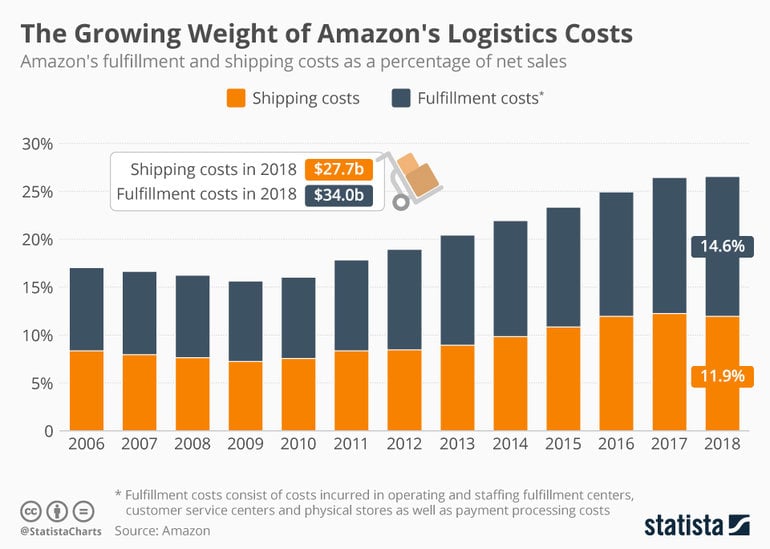
But Amazon can handle it because of the immense profit that comes in from other different sources.
And if you really want to know how to compete with Amazon delivery (and other giants), you need to co-exist with them.
And the only way to do that is to offer free delivery deals.
Luckily, an all-encompassing free delivery isn’t the only option.
And there are many other ways you can create an offer that (seemingly) doesn’t charge your customers for delivery.
In the short-term, the greatest benefit of offering free delivery is a boost in sales.
If shoppers already like to buy your products, free delivery for existing customers will only entice more of them to return for another purchase.
In turn, that leads to greater order volumes and more profit.
At the same time, free delivery is a great incentive for new customers.
It can entice new leads or leads are already in your sales pipeline to convert into actual customers.
The marketing potential of adding free delivery can also be a big boost to your business.
Stores that have free shipping can generally raise brand awareness.
Think Grubhub, Doordash, Uber Eats, Dominos, and Postmates.
All of those brands are now synonymous with free home and food delivery.
But an initial spike in sales doesn’t justify the need to offer free shipping.
So, you need to look beyond the baseline period. That’s why you have to look at the long-term gains.
The main long-term benefit of free delivery is that it elevates the lifetime value of your current pool of customers.
That’s one of the key arguments Kevin Kelly makes when discussing 1,000 true fans.
Adding free delivery adds value to your audience by removing their pain points and elevating their shopping experience to a higher level.
Customers are happier to return to your point of sale and purchase more products, simply because you have raised their overall satisfaction with your service.
Simply put, free delivery turns your one-time customers into recurring regulars that shop more and spend more money than other consumers.
Adding free shipping on orders gives you an edge over competitors because it makes your offer more appealing to customers.
Think of it like this: What product will your customer choose?
The one that you deliver for free to his home?
Or the one from a store that charges £8 for delivery?
However, you are not alone.
And these days, many companies offer free delivery.
So, it’s no longer just a question of gaining a competitive advantage, it’s also about staying relevant in the current landscape.
Adding value to the customers makes them more approachable and trusting to your other offers.
That makes it easier to adopt delivery tactics to grow your operations.
Customers that have a relationship with your company are more likely to accept your other offers.
For example, when upselling or cross-selling with delivery.
All the while converting others to do the same and buying and ordering more products.
Focusing on short-term and long-term benefits makes it easier to warrant the need for free delivery.
Even though all of these advantages raise profit margins, you still need to keep a close eye on costs.
Despite its name, free delivery isn’t really free.
It comes at a considerable cost to you, your company, or your customers.
And despite its many benefits, free shipping expenses can eat away at your profits if you’re not careful.
It’s worth taking a second to look at how much will free delivery cost you and the toll it will take on your bottom line.
Here are five costs you need to keep an eye on:
1. Delivery operations
2. Profit margins
3. Development
4. Marketing
5. Unnecessary incentive
Operational expenses are a huge cost when offering free delivery.
So the first thing you need to do is to calculate how much it costs to deliver a product to a customer.
The first step is to determine whether it’s better to use an internal vs external fleet (i.e. outsourcing to a third-party logistics (3PL) provider like UPS or DHL).
With an in-house fleet, you cover all the costs of delivery yourself. That includes:
When you outsource to an outside 3PL company, a service fee covers all of these costs.
Companies usually charge their services per delivery, size, weight, volume, distance travelled, or as a flat monthly charge.
Once you decide what to do, observe key metrics in delivery logistics.
Measuring KPIs will give you a much clearer picture of your operational expenses.
For example, calculating the average cost per delivery allows you to find out what it costs to deliver a single item.
From there, you can use this information to determine the price of your products and choose the best approach to offer free delivery. (More on that later)
Right now, you need to look at how these costs affect your profit margins.
Profit margins from sales with free delivery are closely related to the cost of delivery.
So to make it work, you need to determine how much products you have to sell and at what price.
Compare these numbers to the operational expenses.
And see whether you can cover the costs of free delivery.
If you see that you will lose money on free delivery, you will have to do something about it.
That means raising the amount of profit you generate, reducing the cost of operations, or both.
A strategic approach to free delivery is going to consume a lot of resources, as well.
Setting up the necessary infrastructure (both digital and physical) requires time, effort, and money.
From a digital standpoint, your IT team will have to add free delivery to all online sales channels (web store, social media, online marketplaces).
And that will require a lot of programming and testing before rolling it out.
From a physical perspective, operations managers will have to audit current capabilities and ensure you have all of the equipment, vehicles, and staff to support free delivery (even when demand exceeds capacity).
Not to mention, it’s worth reviewing your supply chain, depot sites, and inventory to make sure the process is ready before launch.
In marketing terms, offering free delivery has tons of promotional value.
To make the most of it, you will need to invest heavily in advertising to generate awareness and reach as many people as possible with your new offer.
Finally, you have to consider losses from customers who would have bought a product from you without the incentive of free shipping.
But determining whether free delivery is an unnecessary incentive is difficult.
The best way to find this out is to take a look at your current customer base and total sales profit.
If you are satisfied with order volumes and the amount of profit you generate, maybe it’s worth postponing a free shipping incentive until a later date or offering other less costly incentives like discounts instead.
Free delivery is a complicated matter. There is no one-size-fits-all approach to the process. And there is even less room to maneuver than any other type of delivery.
Technically, nothing is free. Somebody is going to lose money here.
Be it you or your customers, someone will always have to get the short end of the stick and carry the burden of free delivery.
But there are ways you can offer free delivery to customers without losing too much money, or losing too many customers in the process.
All you have to do is be smart about it, and choose the best free delivery option for your business. That said, there are more ways than one to do it.
Here are ten ways to offer free delivery:
1. Free standard delivery on all orders
2. Free delivery with a minimum threshold
3. Free delivery on particular items
4. Free delivery at certain times
5. Free delivery to specific locations
6. Free delivery with click and collect
7. Free delivery with membership
8. Free delivery with loyalty programs
9. Adding delivery as part of the product price
10. Free delivery on returns
Companies include free delivery with every purchase, regardless of the order value, products in question, or the number of ordered items.
Stores that sell small, lighter products have no problem offering sitewide free delivery.
For example, it is much easier to offer free delivery with flowers than to offer free furniture delivery.
Others businesses might offer free standard delivery with a fine print that limits free delivery based on method or location.
For example, many US companies offer ground free delivery to customers living in the contiguous United States, excluding the states of Hawaii and Alaska.
However, companies like Zappos offer free delivery and returns on all orders with no minimums or exclusions.

The company can afford to offer widespread free delivery after it was acquired by Amazon. But that’s not the only offer available to you.
Creating a minimum purchase threshold is a more cost-effective way of offering free delivery or shipping.
Setting a minimum order value encourages your customers to buy more products and qualify for free delivery.
This raises the profit margin for every order, reducing the financial risk associated with free delivery. Here’s an example from Target:

Source: Target
But before you adopt this offer, you need to determine your free shipping threshold.
To do that, you need to find the difference between the proposed minimum cart value and your average order value.
After that, you need to multiply it by the gross profit margin and subtract the average cost of delivery from the result.
Here is an example of calculating the free shipping minimum when the proposed minimum cart value is set at $50 and $60:
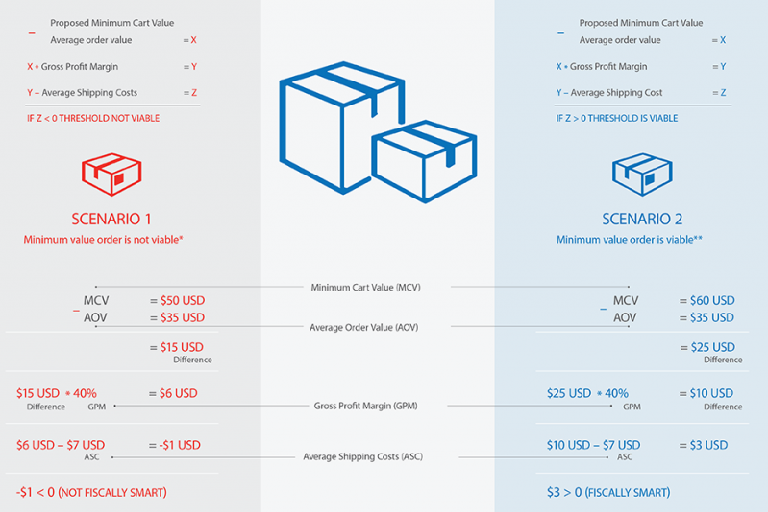
Source: UPS Deliveries
It’s a common practice among retail stores to offer free delivery only on certain products.
Usually, these are products with a profit margin that can bear the cost of free delivery.
For example, some stores use free delivery to incentivize customers to buy luxury goods or products that are not selling well.
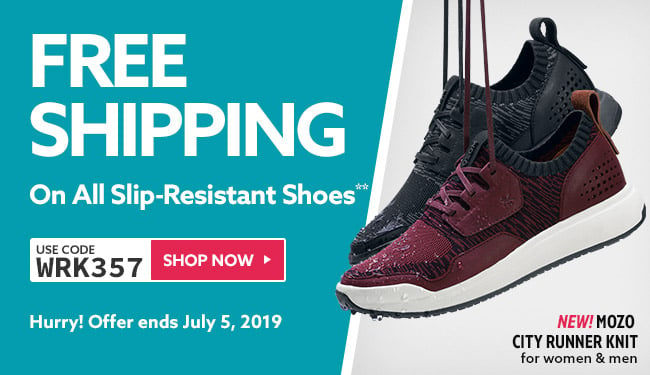
Source: Shoes for Crews
Other stores will use it to sell large items that would otherwise require additional effort from the customer, such as appliance or furniture free delivery.
However, there is a point to be made about adding free delivery to lower-margin products, as well.
Technically, this makes it easier to communicate the free shipping offer to your customers.

Source: Bernie & Phyl’s
Plus it motivates customers to buy those items in larger quantities, especially popular products which have a well-established supply chain.
Adding a timestamp to your offer is another alternative to widespread free delivery.
Instead of an all-year-round standard service, you set up periodical offers on certain days, dates, periods, or times of the year.
For example, a lot of companies offer free shipping during the holiday season. It’s a good idea to add free delivery at this time because it makes you more competitive.
And consumers have also come to expect these kinds of incentives during the holidays.
You may have noticed this during Black Friday or Cyber Monday sales:
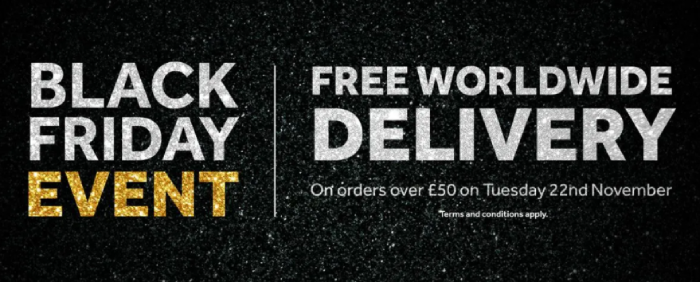
Source: Aston Villa Football Club
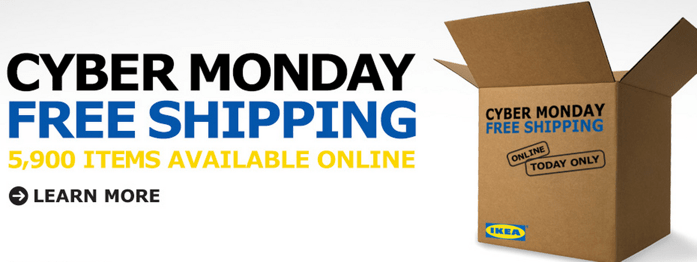
Source: Ikea Canada
Besides the holidays, some retailers create free shipping days and add it to the regular monthly or weekly offer, as the case with Enderly Coffee’s free home delivery on Fridays:
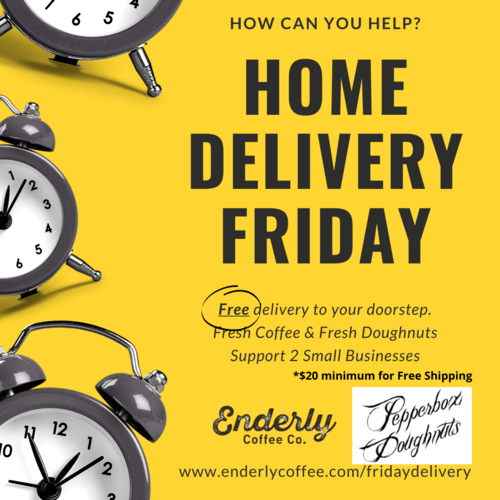
Some extend the offer beyond 24 hours, and offer free delivery over an entire weekend or week:
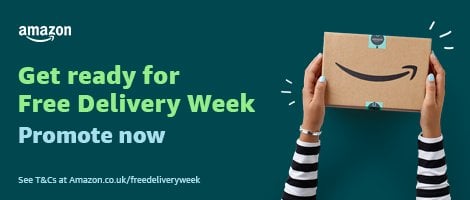
Source: Amazon UK
Likewise, many companies choose to deliver products for free only to specific locations (like the contiguous United States example).
But some take it a step further.
Many small and medium businesses add free local delivery (3-5 kilometres).
Although this is usually associated with food delivery (takeaways or restaurants that offer fast and free delivery), retailers do it, as well.
It’s simply much closer to their supply chains:

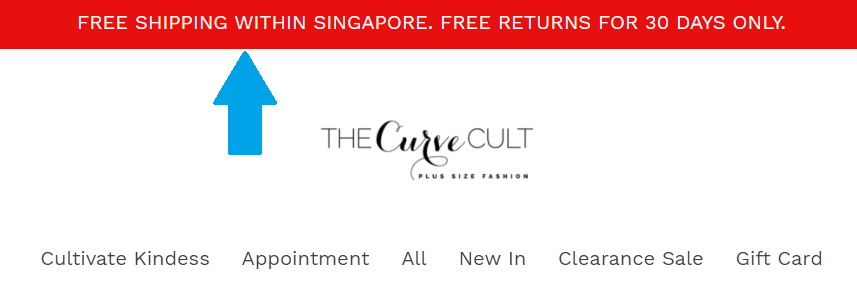
Source: The Curve Cult
Click & Collect is one of the new delivery management trends.
Rather than delivering an order directly to customers, you deliver it to a store nearest to their location.
Once the order is at the physical store, customers can come to pick-up it up.
This usually works if you’re a large retailer with multiple stores or depots at multiple different sites.
But even if you have one physical point of sale, you can offer free delivery today if you add click and collect like Gant from Australia:
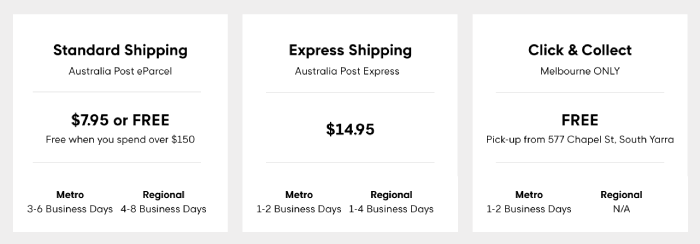
Ever since free delivery with Amazon Prime membership was introduced, this method of offering free delivery with membership became popular among retailers.

Source: Amazon Australia
A company charges an annual fee to customers, and in return shoppers receive access to free shipping on all orders, as well as other perks that would otherwise be unavailable to them.
Retailers use loyalty programs to incentivize shoppers with free delivery to do repeat business.
By doing so, you can generate greater long-term returns from free delivery over time and raise the lifetime value of each customer.
For example, Grubhub, Uber Eats, Doordash, and Postmates all offer promo codes (or coupons) that allow returning customers to qualify for free delivery:
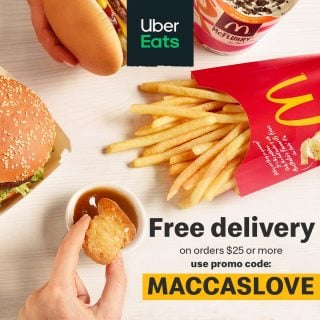
Source: Uber Eats
While other companies, provide customers with a chance to qualify for next free delivery after the initial purchase:
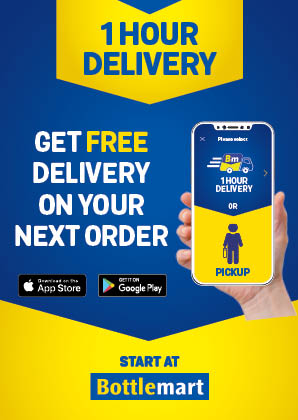
Source: Bottlemart
Baking the cost of delivery into the price of your product isn’t actually free delivery.
But many retailers raise product prices for the cost of shipping, which makes it seem to some customers that they offer free delivery.
At best this is a gamble.
First, if the price of your products is too high, you risk chasing away customers even though they might have to pay for shipping with your competitors.
On the other hand, if your customers catch on to what you are doing, again you risk chasing them off because they will lose trust with you.
However, the chance to promote a free delivery offer can significantly raise traffic to your store.
And with more traffic, the short-term gains more than make up for the risks of charging shoppers for delivery without their knowledge.
Finally, you might not want to consider adding free shipping only on returns.
Even though there is a fine balance between reverse logistics and eCommerce returns.
Many apparel stores, for example, use free returns to entice customers to buy more products.
Customers would go online, pick five items, purchase them, and after trying them out, use free delivery to return the clothes that they don’t want.
Free returns raise the lifetime value of your customers, as well.
In fact, 96% of online shoppers say that a good return policy motivates them to do business again.
That’s why 77% of all returns come from repeat customers.
Free delivery doesn’t necessarily mean fast delivery.
Instead of planning it as standard 2-day delivery, why not extend the delivery window?
If your customers don’t want to pay for a delivery, they won’t mind waiting a few extra days to receive it.
After all, that’s why many of them are willing to pay for faster alternatives, such as same-day delivery.
In fact, 88% of consumers are willing to pay for faster delivery.
It stands to reason that moving the deadline from two to five days won’t affect customer experience.
It gives you more time to consolidate resources and order volumes, and add free deliveries only when it makes sense.
For instance, when a driver is passing through that location between two regular deliveries.
A sure-fire way to make free deliveries less taxing on your day-to-day operations is to plan them ahead of time.
For example, you can allocate one day of the week to complete all of them.
If you decide to deliver all orders marked with free shipping on Fridays, your delivery managers have until Thursday to map routes with multiple stops and significantly decrease your cost per delivery.
And since you only offer to deliver an order for free within five business days, you will always make good on your promise.
The closer your customers are to your supply chain, the less it costs to deliver your products to them.
So, if you don’t want to risk too many costs, start small and deliver products for free only to the local last mile.
Are you still planning manually?
If you are, you better consider automating the process and use route optimisation software instead.
With delivery management software and the ability to plan ahead, you can raise route density on all your routes.
Simply put, when you raise the number of stops on each route, the cost per delivery goes drastically down.
And that’s what can make it more affordable to add free delivery as part of your offer.
On the other hand, you can treat free deliveries the same as any other delivery and plan routes automatically and in real-time.
You can add them as tasks to driver schedules to raise the route density on all orders and, thus, decrease cost per delivery across the board.
If you truly want to minimize the risks and costs associated with free delivery, it’s vital to optimize your entire delivery operations.
Taking a platform approach to delivery management can get you there.
A delivery management platform is an end-to-end delivery solution.
It gives you control over the entire life cycle for each order because it can integrate with any other system you use.
You can automate and increase the efficiency of every part of that process.
Technically, a solution like eLogii can help you:
Not to mention, you can cut costs by as much as 50%.
When you keep operating expenses down, you can elevate your offer to include free delivery.
And we can help with that.
We have everything you need to start improving your delivery.
How to offer same-day delivery to customers? The secret: delivery software. Learn how to deliver purchases to customers on the same day they order...
Want to raise sales by 56%? This guide will show you EXACTLY how to do it using delivery optimization, step-by-step. Plus what software to use to do...
See how to offer same day delivery that’s affordable (for your business and your customers) with best practices and a step-by-step guide.
Be the first to know when new articles are released. eLogii has a market-leading blog and resources centre designed specifically to help business across countless distribution and field-services sub sectors worldwide to succeed with actionable content and tips.
